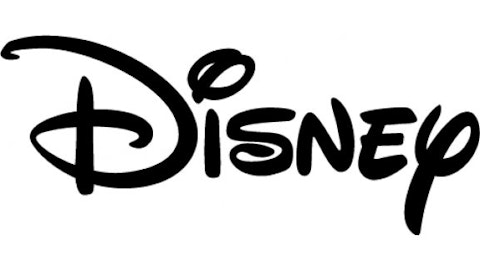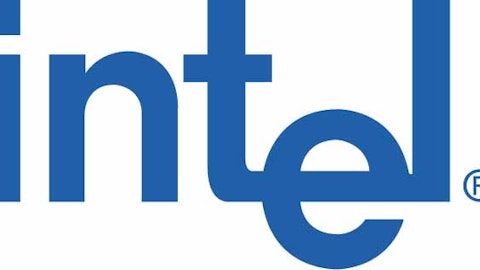
In Part 1 of this series, I considered the traditional players and how they are looking in the shifting landscape. In Part 2, I featured the streaming video players with an eye toward how they look ahead as more shifts occur. In Part 3, I explored the TV enhancers — those companies that are working with traditional providers to enrich the viewing experience. Below, I will look at what I call advanced options — those alternatives that are looking to totally reinvent the way we think about television.
Advanced options
Intel Corporation (NASDAQ:INTC) — Intel Corporation (NASDAQ:INTC) is in the process of trying to bring Internet TV to the market. The company has promised to release a new, live-TV, “over the top” Internet service by the end of the year. The service, which is expected to be called OnCue, will deliver a full complement of live programming and on-demand content to users across a broadband connection. Unlike the TV enhancers described in Part 3, Intel Corporation (NASDAQ:INTC)’s OnCue service will not require a subscription to any other service provider.
As you can imagine, there are significant barriers to entry for a new player entering the market, especially one that will directly challenge the old guard. Last June, Reuters reported that Intel Corporation (NASDAQ:INTC) had begun negotiations with various content providers, offering in some cases to pay as much as a 75% premium in order to gain access to content. Furthermore, many of the contracts that exist between the production companies and cable and satellite providers either impose stiff penalties for going to Internet-based providers or even contain exclusivity provisions. If this seems anti-competitive, which I believe it is, you’ll be happy to know that the Justice Department has begun to look at possible antitrust violations.
Despite these challenges, if Intel Corporation (NASDAQ:INTC) can establish a solid base in the market, it should become a major disruptor. This is exactly the type of development the company needs, given the slowing of the PC market. You should watch for OnCue this year, and follow its acceptance as a strong indicator of Intel Corporation (NASDAQ:INTC)’s future health.
Google Inc (NASDAQ:GOOG) — While Google Inc (NASDAQ:GOOG) has not quite perfected its model yet, at an event in May, it declared that it has already crushed cable with its unique model for bringing entertainment to people. YouTube content continues to expand, having recently hit 1 billion unique visitors per month. During the company’s appearance at “NewFronts” — a digital media trade show focused on advertising — Google Inc (NASDAQ:GOOG) focused on its ability to reach users, rather than on its expanding content offerings. With the rollout of Chromecast, a $35 device that will allow you to get YouTube content directly on your TV across a broadband connection, Google Inc (NASDAQ:GOOG) is taking a different approach than Intel, but ending up in a similar place. Given the popularity of YouTube, if media companies begin to offer increased amounts of content on YouTube, Google Inc (NASDAQ:GOOG) may never look back.
The Walt Disney Company (NYSE:DIS) and Time Warner Inc (NYSE:TWX) — The Walt Disney Company (NYSE:DIS)‘s ESPN and Time Warner Inc (NYSE:TWX)’s HBO Go may not have made the full jump to the advanced options segment, but they should not be overlooked. Each currently offers you mobile, online versions of its content if you already have a subscription through a cable or satellite provider. Despite this current limitation, it is not hard to see each of these companies offering a paid subscription across broadband if the industry moves that way. Each of these companies is cautiously holding alliances with traditional content delivery companies, but still positioning itself to make the leap when the time comes.
But how do you profit?
This is by far the most exciting of the four segments, but also the one furthest from reaching critical mass. If Intel Corporation (NASDAQ:INTC) can perfect OnCue, it will likely become a leader in a new market that I believe will grow exponentially, particularly in the early years. An allocation to Intel upon the release of OnCue is appropriate, but still carries an element of speculative risk. Similarly, The Walt Disney Company (NYSE:DIS) and Time Warner Inc (NYSE:TWX) are well positioned, but the real power of their mobile versions will not be realized until each is available away from your cable subscription.
Google Inc (NASDAQ:GOOG), based just on the potential of YouTube, is the furthest down the path. Chromecast has been wildly popular immediately, and as users explore the depth of YouTube, this will likely increase. Furthermore, given Google’s success in other areas — IDC recently reported that Android market share has reached 79.3% — this is the most solid investment right now. Google is a must-own stock for most core portfolios, and with the potential of YouTube, leads the pack of choices in the advanced options segment.
The article Profiting From the Battle for the Future of Television: Part 4 originally appeared on Fool.com and is written by Doug Ehrman.
Fool contributor Doug Ehrman has no position in any stocks mentioned. The Motley Fool recommends Google, Intel, and Walt Disney (NYSE:DIS). The Motley Fool owns shares of Google, Intel, and Walt Disney.
Copyright © 1995 – 2013 The Motley Fool, LLC. All rights reserved. The Motley Fool has a disclosure policy.





